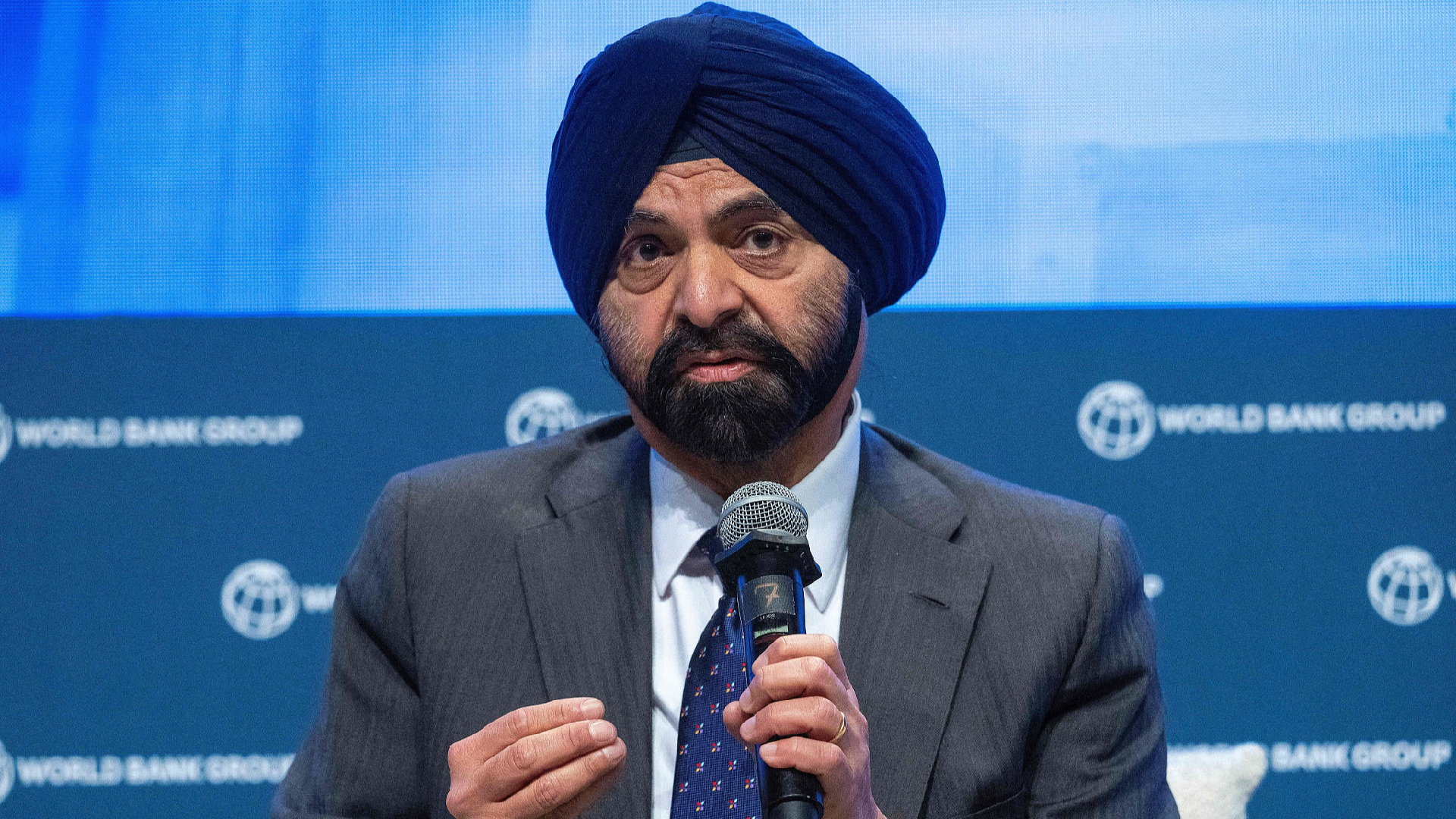Opinion | Biden’s Student Loan Forgiveness is Wrong. Here’s How to Handle College Debt Instead.
America has turned higher ed into a lavishly expensive sacred cow, and now we’re all footing the bill. Let’s make college debt boring again.


Today, with the stroke of a pen, President Joe Biden made millions of Americans up to $20,000 richer by excusing them from repayment of money they had borrowed, costing taxpayers hundreds of billions of dollars.
The recipients aren’t the poorest Americans, the neediest, the unluckiest, the most indebted or those serving our nation most nobly. They qualify, rather, because they borrowed money for college.
Politically, it may be savvy to deliver on a key campaign promise to the college-educated base of the Democratic Party. Notably, many of those receiving relief borrowed to finance graduate degrees like JDs and MBAs — a group hardly in need of financial help, but one that will remember this giveaway come November. But from afar, this choice looks absurd. As of June, American households held more than $4.5 trillion in consumer debt (excluding home mortgages), most of which was not student loans. According to the Federal Reserve, fewer than 1 in 4 households have student-loan debt, and it is more common among those with higher incomes. By what logic is “borrowed money for college” a sensible standard for selecting the recipients of unprecedented public beneficence?
The logic is uniquely American, and incredibly harmful. It is captured well in the familiar Hollywood trope of a teenager, discovering his family’s financial troubles, conceding gloomily that he can abandon his first-choice school and attend the state university nearby, only for a determined parent to insist: No, we will find a way.
In America, this is meant to be inspiring. But the statistics suggest it’s more likely to be a tragic mistake.
The narrative goes that the college degree is the sine qua non of economic opportunity, and the college experience a once-in-a-lifetime inflection point for coming of age and launching into adulthood. On this basis, American culture has made it an implicit parental obligation, and American law has made it an explicit public obligation, to facilitate any student attending any school, regardless of cost. Young Americans and their families are encouraged to save as much as possible and then assume whatever debt necessary — by a culture equating the practice with “investing in your future,” by policymakers offering subsidies to promote indebtedness and by colleges that cash the checks upfront while accepting no accountability down the road.
But the narrative is wrong. Students who enroll in college are more likely to drop out or graduate into jobs that don’t require their degrees than they are to travel the expected college-to-career path. Research also suggests that what school you attend just doesn’t matter all that much: For men, school selectivity has no effect on future earnings; for women, more selective schools lead to more hours worked and lower marriage rates.
Indeed, it’s not clear what we’re getting for our money. On average, colleges in America consume more than $25,000 per student per year — second only to Luxembourg among developed economies and more than twice the spending in countries like Denmark, France and Germany. The focus on elite private colleges is especially harmful: While we constantly conflate the cost of the “college experience” with affording an “Ivy League education,” median tuition for an in-state, four-year public university is still only $8,300 per year. Every child in America can pay his or her own way at a perfectly good college for about half the income from a part-time, minimum-wage job.
The cognitive dissonance between the unquestioned commitment to extravagant spending on college and the questionable value of that spending is what yields America’s bizarre discourse around student-loan debt — and leads to irrational policy moves like Biden’s. Is there a better way?
There’s a deep contradiction in our national beliefs about college, and it’s perfectly embodied in the thinking that drove Biden’s decision.
On one hand, under the presumption that degrees are precious and consistently produce a high return on investment, American law uniquely excludes student loans from discharge through the traditional bankruptcy process. We are so confident in the wisdom of unconstrained spending on higher education that we create a public guarantee for student loans — a form of credit that would otherwise make little sense to extend — and, to protect the lenders, we eliminate the recourse that borrowers traditionally have when their investments disappoint, or they spend beyond their means.
You can run up tens of thousands of dollars of credit card debt taking vacations and walk out of bankruptcy court owing nothing. But the debt you incurred for the life-changing wonders of time on a college campus? That must stay with you until death.
On the other hand, because we knew full well that the social promise underlying the debt is a foolish and fractured one — in fact, college is often a bad bet with a low return on investment — progressive politicians began demanding that the government wipe it away altogether. At the extreme, they equate its very existence with “violence.” No one ever explains what makes the student-loan borrower more deserving of government largesse than the family that took on an auto loan for the car that gets dad to work. Rather, the implicit judgment seems to be that the nation must, having sanctified the borrowing, collectively assume responsibility for the result.
The result is a dysfunctional system for financing higher education that has generated more than $1.7 trillion in outstanding student debt, representing many loans that were unwisely offered to and accepted by borrowers who now face untenable burdens and deserve some avenue for relief.
So what should happen? Biden’s approach of simply erasing the debt treats the obvious symptom — the debt — in the quickest and easiest (and also costliest) way, while doing nothing to address the underlying problem.
Instead, America should embrace the banality of the student loan as just one form of debt among many — chosen by some for purposes of investment, and by others for what amounts to conspicuous consumption, exploited by sellers of a product with variable quality. As luck would have it, America has a very good legal system for governing regular debt, complete with structures for managing risk on all sides, options for sellers to provide credit themselves if no one else will, and equitable relief for those who make commitments they cannot keep.
The keystone is our uniquely lenient bankruptcy system. Unlike in most other countries, the typical American can go to court, declare himself insolvent, hand over some remaining assets, default on his remaining debts and return home to a house exempted from the proceedings. This choice is by no means an easy one — his credit score plummets and borrowing becomes more difficult and costly; friends and neighbors are likely to notice, along with anyone who runs a background check in the future; feelings of failure and accompanying shame are common. Thus, while Americans file for bankruptcy far more frequently than Europeans, the occurrence is sufficiently rare that consumer credit remains widely available and affordable. The cost of bankruptcy is low enough to encourage risk taking and ensure that someone who truly needs a fresh start can get one, but high enough that most who can avoid it will do what they can to steer clear.
This is the option that should be available to all student-loan holders.
Continuing the desacralization of student debt, we should eliminate the labyrinth of government grants, loans, subsidies and guarantees that assert an open-ended public commitment to financing anything a university can think to charge for. Public support should come at the state level through funding of state university systems and at the federal level through a simple, means-tested grant that covers, say, 50 percent of the median state’s four-year public university tuition. Tying the grant value to the median state would prevent individual schools from extracting more money by raising tuition. Costs of room and board would be excluded. Young adults not enrolled in college do not expect the public to pay for their housing or food; neither should those enrolled.
Where would students find additional funding for more expensive options? A private loan market would likely exist but, absent the guarantees and subsidies, credit would be scarce and expensive. Borrowers would tend to have limited credit history and few assets. Lenders would be poorly positioned to evaluate the likelihood of successful repayment. The prospect of discharge in bankruptcy would add further risk. These obstacles are features, not bugs. Loaning large amounts of money to teenagers with uncertain prospects and no collateral is a bad idea for lenders because it is a bad idea, period. Finding ways to make it sufficiently attractive to saddle those teenagers with the loans does no one (besides college administrators) any favors.
Fortunately, institutions exist with the capital to finance all the necessary borrowing, the information to assess the wisdom of borrowing to enroll, the resources to help students succeed and the incentives to make the system work. Those institutions, of course, are the colleges themselves. Just as sellers provide financing for cars, capital goods and sometimes real estate, colleges should be expected to finance the education they provide. Instead of cashing tuition checks before freshman orientation has begun, and leaving the student to someday pay back a third-party lender, colleges should receive tuition from their students after the fact, when those students have been launched into careers that allow them to afford the payments.
This shift would initially require institutions without large endowments to borrow working capital for providing today an education that would be paid for tomorrow. But most institutions will have sufficient fixed assets to secure the loans, and the federal government could play a role if needed in guaranteeing that financing — with default leading promptly to liquidation.
Meanwhile, students who made the choice to borrow under the old system would continue to repay those debts if they can, and would have the option to declare bankruptcy if they cannot. Such bankruptcies would cost the federal government much less than Biden’s broad-based loan forgiveness, and would help the transition to a better system and mindset rather than Biden’s doubling down on the broken one.
Colleges dependent on their own alumni’s future earnings to fund their operations would face a radically different set of incentives than today’s. They would have no choice but to structure their programs to be affordable, relative to the value they deliver. They would have no choice but to make admissions decisions on the basis of likely future success, rather than ability to pay upfront. And they would find it suddenly in their vital interest to ensure their students’ successful connection to the labor market and even to provide subsequent training opportunities.
College administrators who say this model would not work are really just admitting that their models do not work, absent a nation entranced by their mystical incantations. Let them, not their students, suffer the consequences.












